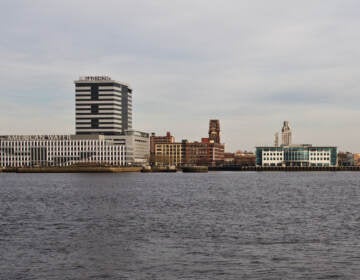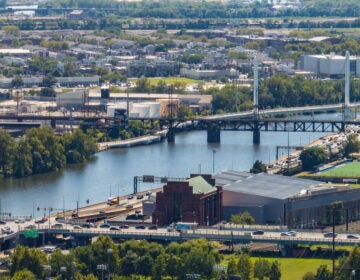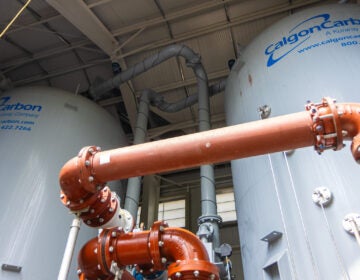Planned New Jersey wind port will help meet strong demand from a growing offshore industry
Set for 200 acres along the Delaware River, the port will be a staging ground for the manufacture, assembly, storage, and shipment of giant wind turbines.
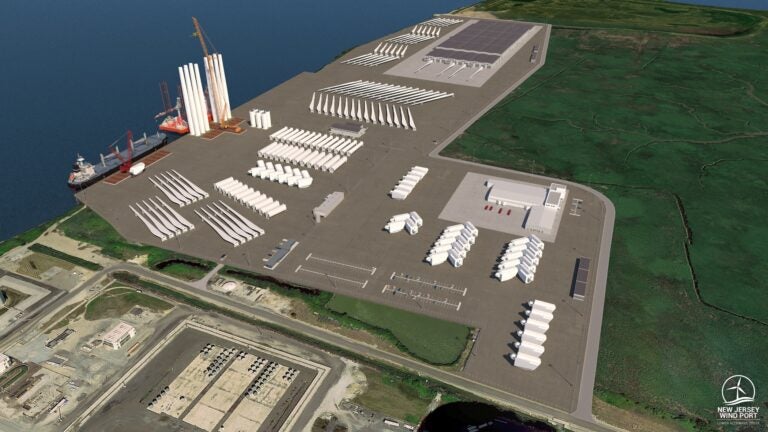
A rendering shows a southern view of the planned 30-acre marshalling port for the New Jersey Wind Port on Artificial Island in Lower Alloways Township and 130+ acres of adjacent manufacturing space. (Courtesy of the New Jersey Economic Development Authority)
The wind port New Jersey is planning for about 200 acres along the Delaware River will help the state meet its ambitious goal of 100% clean-energy use by 2050, as it also responds to strong demand for infrastructure from offshore wind farm operators up and down the East Coast over the next 15 to 20 years.
The state-owned port in Lower Alloways Creek Township, Salem County, will be a staging ground for the assembly, storage, and shipment of giant wind turbines before they are installed by wind farm operators. It will also include space for the manufacturing of turbine components.
It will be the first purpose-built greenfield site to support the offshore wind industry in the United States, and its position on the mid-Atlantic coast is expected to be attractive to the wind farm operators that are due to begin operations from the Carolinas to Maine.
The port’s location makes sense, too, because it has unrestricted access to the Atlantic Ocean, said Tim Sullivan, chief executive of New Jersey’s Economic Development Authority, which is heading the project.
Because the huge wind turbines — often measuring some 400 feet tall — are transported to wind farm sites vertically, they cannot pass under bridges or power lines, a condition that ruled out the use of existing ports such as Paulsboro, farther up the Delaware River in Gloucester County.
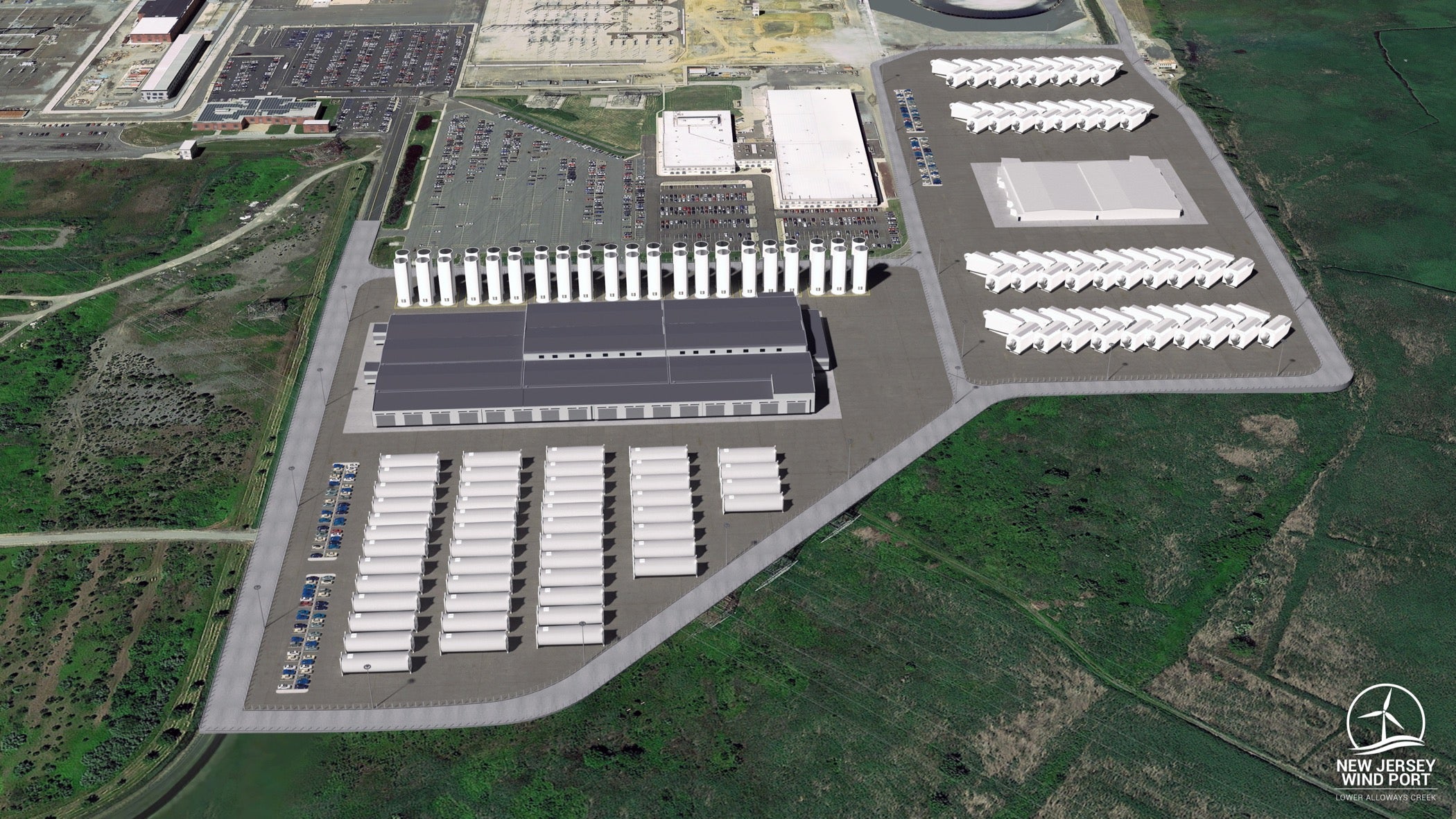
“Once you stand them up, you’ve got to have free access to the open ocean, so you can’t be inside any bridges or electrical infrastructure, which is why we think the Salem County location is the best-positioned asset like this anywhere on the East Coast,” Sullivan said in an interview.
Although some wind-farm towers, or “monopiles,” will be manufactured at the Port of Paulsboro under a separate agreement announced by Gov. Phil Murphy on Dec. 22, they will be floated downriver horizontally for assembly at the new wind port.
And the wind port site, announced by Murphy in June, has enough space to build docks and staging areas that are strong enough to take the weight of turbine components such as the wind-farm towers that weigh as much as 5 million pounds.
“You need some heavy-duty infrastructure, and you need a large space to do this with serious industrial capacity,” Sullivan said.
Construction is due to start in 2021, possibly in the first half of the year but “certainly by the end of the summer,” he said. The first phase will create a 30-acre marshalling yard where turbines will be assembled, as well as a 25-acre manufacturing area.
The manufacturing space is designed to be attractive to wind farm operators, who will be able to reduce their costs by making the components and assembling the finished turbines in the same place, Sullivan said.
“Manufacturers and developers want to be co-located, but you need a lot of space to do it,” he said. “Co-locating marshalling and manufacturing produces efficiencies that will be hyper-competitive in the marketplace. The opportunities for synergies are very significant.”
If it is completed on schedule in 2026, the port is expected to create 1,500 permanent jobs and generate $500 million a year in economic activity, the Economic Development Authority said. It predicted “hundreds” of jobs will be created during construction.
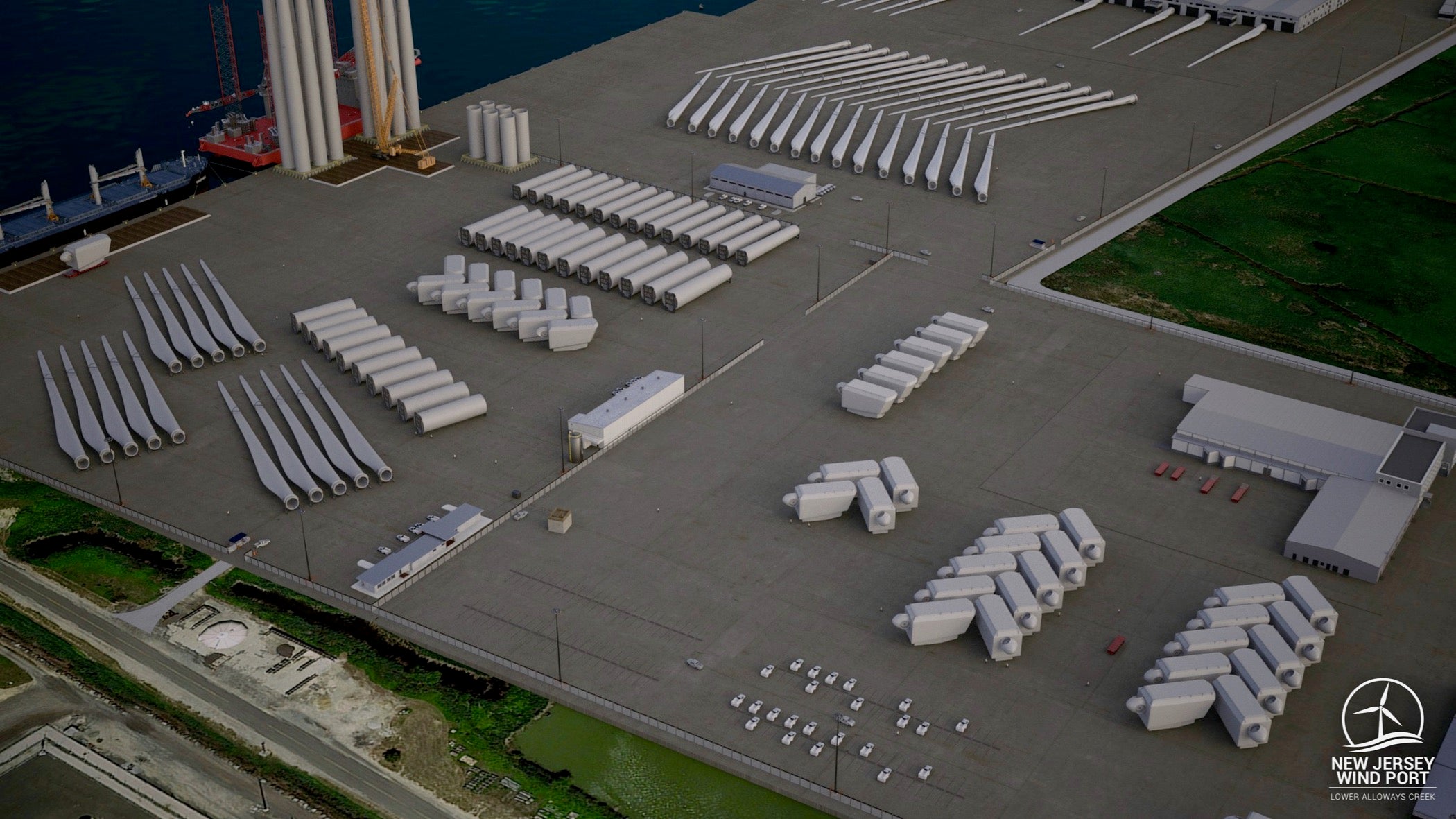
The project is expected to cost between $300 million and $500 million and will be financed by state-issued bonds that will be repaid with revenue from the port, said Sullivan, whose agency will own the site.
As designed, it would not only serve the fledgling wind industry off the Jersey Shore but become a nexus for a rapidly growing number of wind farms throughout the East Coast, where the capacity for marshalling and assembling wind-farm infrastructure currently lags well behind the plans for the farms themselves.
Only one such port currently operates on the East Coast, at New Bedford, Mass., while two others — at New London, Connecticut, and Arthur Kill, New York — are planned. But even if all three ports became operational, they would fail to meet anticipated demand from the offshore wind industry, according to a study this year by the University of Delaware.
The study estimated that demand for assembly and manufacturing space in 2022 and 2023 would be about double the available capacity of the three ports, indicating a strong need for new port facilities such as the Salem County site.
And it argued that demand for the space would be strong enough to justify building another wind port on the Delaware Bay in northern Delaware.
“In light of the deficit between demand and current capacity, there is a clear need to pursue additional port opportunities on the eastern seaboard,” the study said.
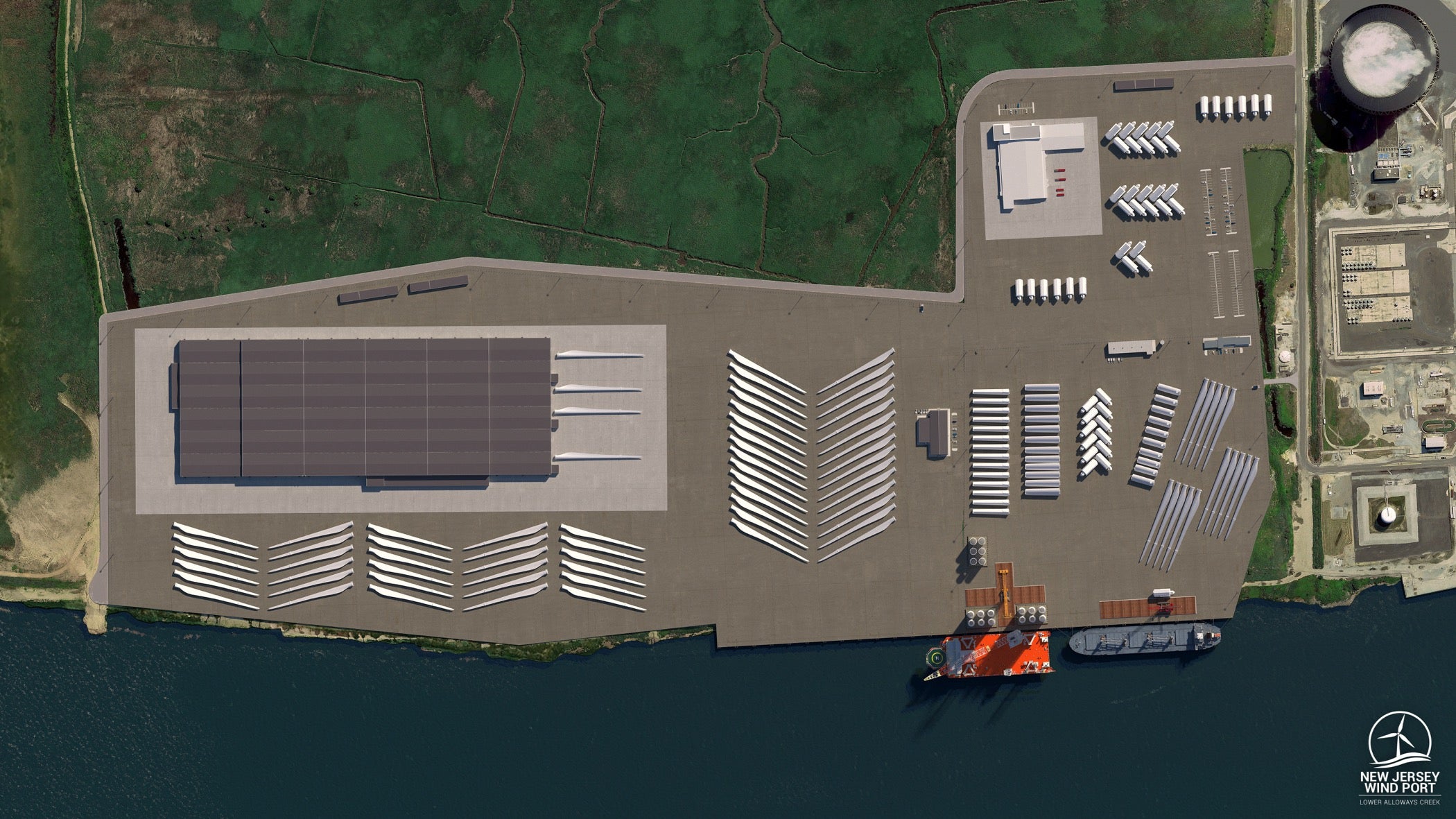
A new industry, with growth potential
Nationwide, the offshore wind industry is still in its infancy, with only one wind farm, off the coast of Rhode Island, operating at present. In New Jersey, the first commercial-scale wind farm will be built and operated by the Danish firm Ørsted about 15 miles off Atlantic City. The plan is to generate 1.1 gigawatts, starting in 2024.
By 2035, New Jersey will be buying 7.5 gigawatts a year of offshore wind power, or enough to power 3.2 million homes, according to a commitment announced by Gov. Murphy in November 2019. The process is being implemented by the Board of Public Utilities, which in September invited operators to bid for the rights to generate up to 2.4 GW in the second solicitation of the program.
New Jersey’s offshore wind goal is the second-biggest among seven Northeastern states, after New York, which plans to buy 9 GW in the same period. In all, the seven states have committed to buy 24 GW of offshore power by 2035.
By 2026, 12 East Coast wind farms will be generating about 8 GW of electricity, as specified in power-purchase agreements signed with state utility regulators, according to the University of Delaware study.
Willett Kempton, a UD professor who oversaw the study, said the commitments by Atlantic Coast states to buying offshore wind power will help to underpin a huge national shift toward clean energy over the next 15 years, when most fossil fuel-fired power plants are already scheduled for retirement.
He predicted the shift will be driven not by ideology but simply by the lower costs of building offshore and onshore wind farms and solar installations, compared with new fossil-fueled plants fitted with carbon-capture technology, or new nuclear power stations — both of which are far more expensive than the clean-energy alternatives.
“We’re about to embark on a wild ride in the power sector,” he said in an interview. “There’s going to be a big shift, and it’s actually not going to cost much.”
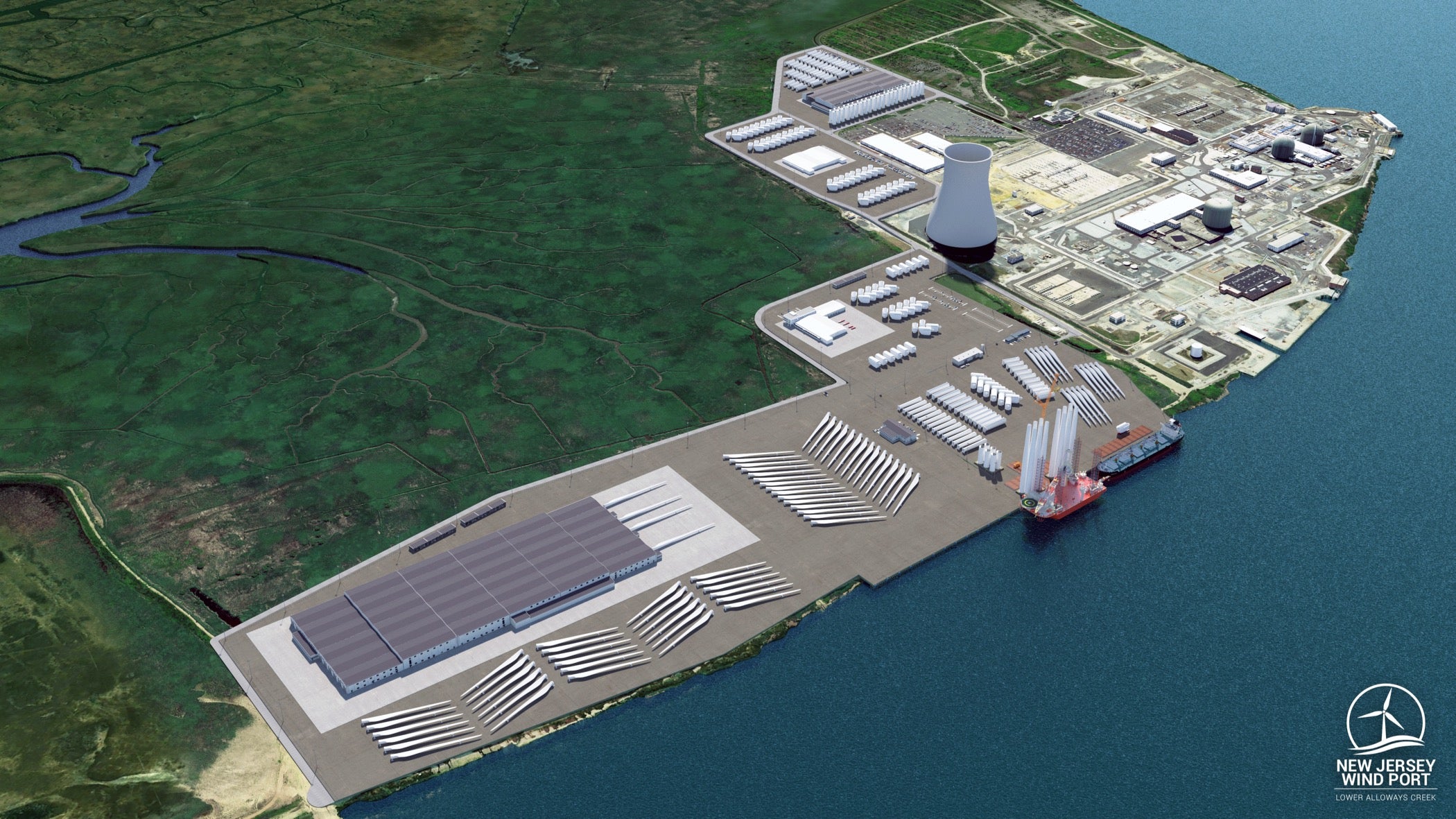
The environmental view forward
The industry is likely to get a further boost soon from the incoming Biden administration, which has set a target of reducing carbon emissions from the power sector to zero by 2035. That’s expected to spur the federal Bureau of Ocean Energy Management to make it easier for wind-farm operators to lease areas of ocean in federal waters — such as those off New Jersey — where wind resources are rich, Kempton said.
The expected encouragement from the new administration in Washington would replace an obstructive approach by the Trump administration that has been more interested in developing fossil fuels, he said.
“I know from talking to members of the transition team that they’re interested in offshore wind. And we know that offshore wind can provide a lot of power in areas that are close to high loads, like the coasts — most of the population is in the coastal zone,” Kempton said.
Offshore wind will complement land-based wind and solar in helping the new administration meet its emissions target, he said.
Despite being held back by the Trump administration, demand for ocean leases remains strong, according to the American Wind Energy Association, a trade group that is rebranding itself as the American Clean Power Association, starting in 2021. It said that three ocean areas leased for a record $135 million each in December 2018, “underscoring robust competition and market interest.”
The association estimates that development of 30 GW of offshore power — a little more than is currently committed to by Atlantic Coast states — could support 83,000 jobs and deliver $25 billion a year in economic output by 2030.
The expected economic benefits include support facilities like the New Jersey wind port on the Delaware River. The trade group said investment of $1.3 billion in manufacturing and ports has already been made by manufacturers and project developers.
Jeff Tittel, director of the New Jersey Sierra Club, said offshore wind power will be an important contributor to the state’s clean-energy goal although it’s unlikely to contribute as much as the 50% of overall electricity production claimed by the governor for the target period. That’s because electricity demand will surge in coming decades due to the electrification of transportation and other economic sectors, he said.
The federal government has estimated 21 GW of wind resource exists off the coasts of New Jersey and New York, about three-quarters of which would be harvested by the two states’ current targets, but the overall estimate could rise as turbines get bigger and more efficient, Tittel said.
“The key to offshore wind is that it’s zero-carbon in electrical production and it can supplant many dirtier forms of power,” he said. “It’s a very critical component of our renewable energy mix.”
___
The reporting for this story is part of the broader “From the Source” project and is supported by the Lenfest Institute, the National Geographic Society, and the William Penn Foundation.
See other stories produced by WHYY in this series at https://whyy.org/watershed-watch/

Get daily updates from WHYY News!
WHYY is your source for fact-based, in-depth journalism and information. As a nonprofit organization, we rely on financial support from readers like you. Please give today.



